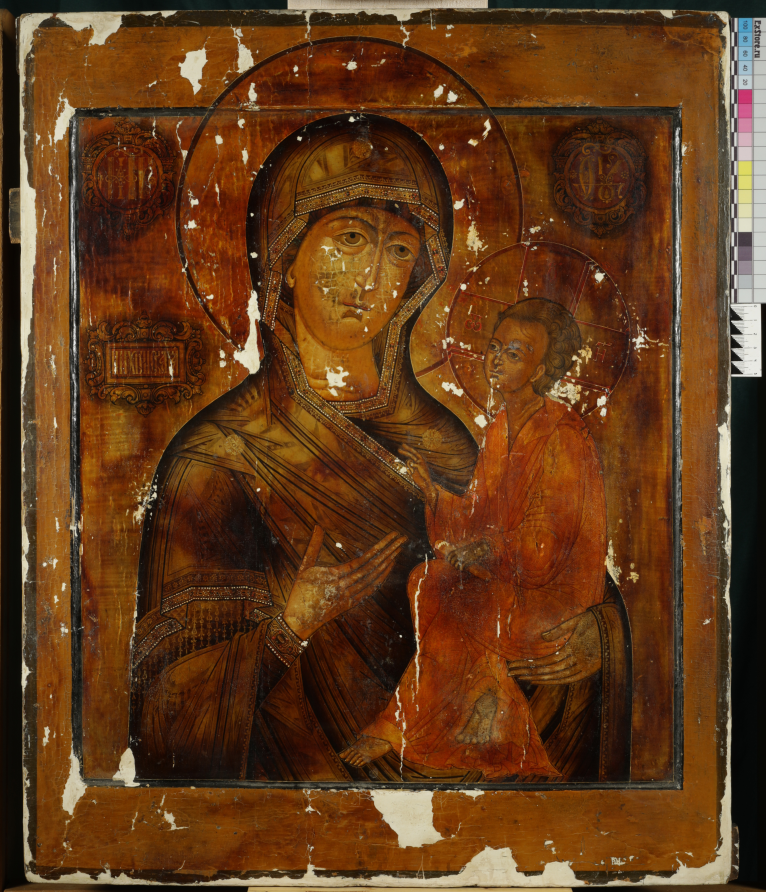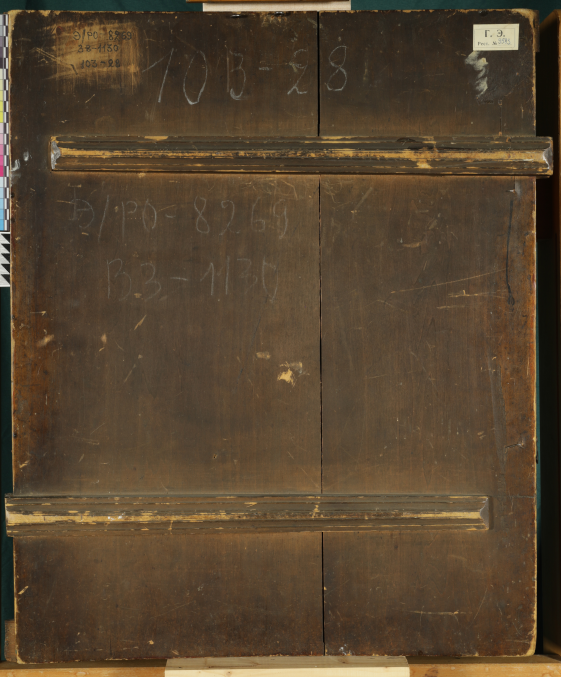Icon of Our Lady of Tikhvin
Image of Our lady of Tikhvin is a one of the most revered by the Russian Orthodox Church. Legend tells that this icon was painted by Luke the Evangelist himself. In 1383 this image miraculously appeared in Russia. The icon ‘marched radiantly through the air’ across several villages and stopped above the Tikhvinka river. A wooden church in the name of the Assumption of the Blessed Virgin was built at the site, and the holy relic was being kept there. In the 16th century Vasiliy III of Russia ordered to build the stone Uspensky Cathedral, and the icon of Our Lady of Tikhvin was moved there. During the reign of Ivan IV the Terrible, in 1560, a monastery for men was founded on the shore of Tikhvinka, and it became a new home for this orthodox relic.
Image of Our lady of Tikhvin was highly revered among the adherents of old faith – Old Believers, for them this icon was a keeper of true Orthodox faith.
Icon Our Lady of Tikhvin from the State Hermitage Museum collection belongs to one of the brightest schools of Russian Old Believer icon-painting of the late 18th c. known as “pomor style”. This unique tradition developed at the Vygovskoe hermitage that was founded in 1694 in the Olonetsk district (nowadays republic of Karelia) after the schism of the Russian Orthodox Church. Such features typical for the “pomor style” as asceticism of almost monochrome, white-washed faces, decorative richness of color contrasts (use of cinnabar, abundance of gold in the garments), clear drawing, and the cartouches outlined in black against the gold backgroundin imitation of engraving, are all clearly seen in the Hermitage icon.
At the moment the exact provenance of the icon remains unclear, but its large size implies that it was probably in one of the Old Believers' prayer houses on Vyg or in St. Petersburg, where large Pomor communities existed from the 18th century on.
Preservation condition:
The icon panel is composed of two boards detached at the seam. Back side is reinforced with slats to prevent warping In the center there is an ark (square central area of the icon panel intended for the main image). There are numerous vertical dents in the ground and the paint layer, losses of the paint layer in the middle of the upper part. The most damaged areas are located at the sides of the icon; gilded halos, background and painted margins need most complicated restoration. There are restoration overpaintings that changed their color. The varnish layer is uneven, darkened, and distorts the general appearance of the image
Necessary conservation treatment:
- preparing the restoration documentation
- carrying out a complex of physical, chemical, microscopic, technological research
- photographing the item at all stages of restoration process
- gluing and filling in the crack at the backside
- reinforcing the paint and ground layers
- thinning the layer of old varnish
- removing old restoration retouchings
- correction of the restorers ground
- applying conservation varnish
- retouching the paint losses

